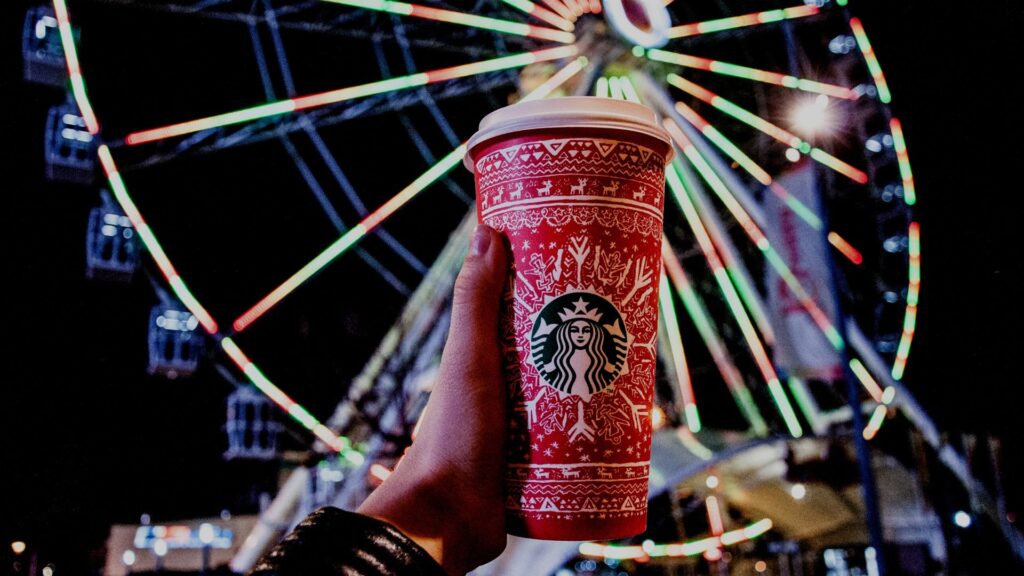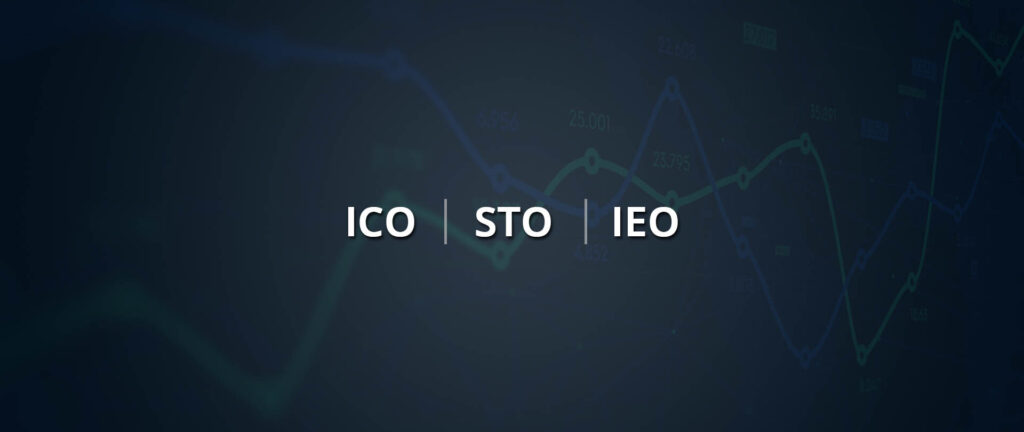
The Non-Fungible Token (NFT) era has been the subject of much discussion in recent times, with some suggesting that its time in the spotlight has ended. However, it is important to note that every technology has a life cycle, reaching its peak or maturity before declining in popularity. Similarly, the initial hype around NFTs has subsided, but there has been a resurgence in their usage in the enterprise sector. Enterprises are now viewing NFTs as a long-term investment for capturing customer loyalty rather than a short-term profit-making tool.
Starbucks is an excellent example of a company that has effectively integrated NFTs into its business model, offering valuable insights into how other businesses can leverage NFT technology. In this blog, we will explore the resurgence of NFTs and how businesses can take advantage of this opportunity.
- How have NFTs evolved over the past years?
- How are businesses viewing NFTs now?
- How did Starbucks Odyssey come about?
- The Question: What did Starbucks do differently?
How have NFTs evolved over the past years?
NFTs, or non-fungible tokens, have evolved significantly since their inception in 2017. Originally designed to tokenize unique digital assets, such as collectibles or artwork, NFTs have since expanded to cover a wide range of use cases.
Initially, NFTs were primarily used in the gaming and art industries, with platforms like CryptoKitties and SuperRare leading the way. These platforms allowed users to create and trade unique digital assets, from virtual pets to art pieces.
However, as the popularity of NFTs grew, they also began to be used in other industries. Sports teams, for example, began using NFTs to create digital collectibles, allowing fans to own a piece of their favorite team’s history. Musicians and other celebrities have also started using NFTs to create unique experiences for their fans, such as exclusive access to concerts or VIP meet-and-greets.
More recently, NFTs have been used to represent ownership in real-world assets, such as real estate or even stocks. As the technology behind NFTs evolves, we’ll see even more use cases emerge. From virtual real estate to digital identities, NFTs are poised to transform how we think about ownership and value in the digital age.
In late 2021, the NFT market experienced a significant dip in trading volume, with some reports indicating an 80% decrease in activity. This dip was attributed to a combination of factors, including a general market correction in the cryptocurrency space and a saturation of low-quality NFT projects flooding the market.
Even after this significant dip, businesses felt this technology could be a great marketing tool rather than a short-term money-making technology.
How are businesses viewing NFTs now?
Starbucks is one of many businesses that entered the NFT journey. Some other notable brands include Mcdonald’s, Wendy’s, Coca-Cola, Adidas, Gucci, etc. But have they all been successful?
The answer will question whether you should bring this Web3 technology into your business strategy.
Let’s take a couple of successful cases here.
Taco Bell – Integrating CSR with Tech
Taco Bell was one of the early adopters of NFTs and created a collection of 25 taco-themed NFTs in March 2021. The NFTs were initially sold for 0.001 ETH, which is approximately $2.
The collection was very popular and sold out within half an hour. The resale prices of the NFTs also skyrocketed in certain NFT markets, with one selling for over $180,000.

Source: https://www.economywatch.com/cryptocurrency/nfts/buy-taco-bell-nft The collection was sold on the NFT marketplace Rarible and was highly sought-after by collectors and fans of the brand alike.
Taco Bell’s NFT campaign’s success generated significant social media buzz. It demonstrated the potential of NFTs as a marketing tool for brands looking to engage with their audience in new and innovative ways.
The interesting and community-based action that Taco bell did was announce that the proceeds generated from its experimental NFT campaign would be donated to its Live Más Scholarship, which is awarded to “passionate students nationwide,” as stated on the company’s website.
This corporate social responsibility strategy gave Taco bell gave them an edge. Because back in 2021 and early 2022, businesses looked at NFTs as a short-term money-making concept by increasing their demand using influencer marketing.
Budweiser – Making Tech Easier with Traditional Methods
You! yeah, YOU who is reading the blog. Tell me honestly do you own any crypto?
Buying and selling NFTs will be easy if the answer is YES. You are relieved.
For those who said NO, you need to buckle up your seat because it will be a messy journey; at least, that’s what we thought.
In 2021 when NFTs were on the rise, few marketplaces supported payment methods like credit cards.
Let’s look at a small stat – a mere 4% of adults in the United States have ever possessed an NFT, as per data from Security.org. Moreover, research from PYMNTS has revealed that less than 25% of consumers have owned or currently own any form of cryptocurrency.

So Budweiser made sure that buying NFTs was easier for everyone. The company created a special vanity URL, Budweiser.com/nft, to simplify the purchase of the tokens, with options to pay with Ethereum, Bitcoin, or credit cards.
Let’s look at what went wrong for brands that could have been more successful in using NFTs. This one brand was particularly criticized when it launched its NFTs.
The entrance of a big player like Porsche into the world of Web3 is generally welcomed by NFT collectors. However, the launch of Porsche’s NFTs fell short of expectations, leading to an excess of unsold tokens. Porsche had planned to release 7,500 Ethereum NFTs celebrating its iconic 911 sports car, providing access to events and exclusive merchandise. But due to poor sales, Porsche announced plans to reduce the number of tokens available.
What happened?
A few people on Twitter mentioned that it is because of the pricing strategy the NFT launch failed. Porsche revealed that it would sell the NFTs for 0.911 ETH each, equating to roughly $1,475 at launch. This is a high price in an NFT market that has lost momentum compared to the early stages of last year, particularly for a project with thousands of NFTs available for sale.

But let’s be practical here, a company like Porsche does not have an audience segment containing everyone. And in a world where NFTs without any utility have been sold for thousands of dollars, why has a premium auto brand failed?
An interesting take from web3 marketing professionals on LinkedIn mentioned these three points for the root cause of failure:
- There needed to be proper information about the utility when someone purchases an NFT.
- The targeting was done mostly on Web2 audiences who needed proper education.
- Need to take help from proper web3 experts.
As mentioned, this is a summary of emotions expressed on one platform and Twitter; it was all about the pricing strategy.
Now let’s look at how, amid this ever-changing web3 environment, Starbucks made their NFT sale within just 18 mins.
How did Starbucks Odyssey come about?
Starbucks introduced a new Web3 technology-powered experience called Starbucks Odyssey on September 12, 2022, that enabled Starbucks Rewards members and employees in the United States to earn and purchase digital collectibles, gain access to exclusive benefits, and participate in immersive coffee experiences.
This made Starbucks one of the early companies to integrate non-fungible tokens (NFTs) into a leading loyalty program on a large scale while creating a digital community that opened new opportunities for Starbucks to engage with its members and partners. The company collaborated with the blockchain platform Polygon to develop its NFTs.
Now four months later, Starbucks released its debut collection of NFTs on March 10, 2023, consisting of 2,000 digital “stamps” priced at $100 each. Known as “Journey Stamps,” these NFTs were designed to be easily understandable for those unfamiliar with the technical aspects of NFTs. The NFTs sold out in under 20 minutes according to CoinDesk.

Members who collect the NFT stamps from Starbucks Odyssey will earn points that can be redeemed for exclusive benefits which surpass those offered by a traditional Starbucks Rewards account. These benefits range from virtual espresso martini-making classes to unique merchandise and artist collaborations.
As members accumulate more points, they can receive invitations to special events at Starbucks Reserve Roasteries or even earn a trip to the Starbucks Hacienda Alsacia coffee farm in Costa Rica. While the largest perks are expected to be reserved for NFT purchasers, Starbucks has yet to make final decisions.
Starbucks plans to fully integrate the Odyssey program with its existing loyalty rewards beyond simply sharing user account credentials between the two programs
The Question: What did Starbucks do differently?
This isn’t the first time a brand has used an NFT in its marketing efforts. Businesses like Mcdonalds, Taco bell, Nike, Adidas, and NBA had their fair share in the NFT space. But only a few of those brands were successful in their NFT journey.
Suppose you take a closer look at the brands that succeeded where only those that didn’t use the term NFTs often in their marketing message. For example, Starbucks called it digital stamps, and Nike called it Digital collectibles. These terms are in use for common folks.
Since there is a common misconception among people that NFTs are just digital arts that can be bought and traded. The technical definition still needs to reach a huge audience. For some consumers, change is good until they understand what that change is.
Another main hurdle when it comes to web3 space is the usage of crypto. Very few percent of the world’s population uses cryptocurrency, and to buy an NFT, the primary way is to have crypto in your crypto wallet. Starbucks broke this stereotype by allowing people to buy their NFT using a simple credit card transaction.
This is one of the reasons why many gamers are not moving towards NFT-related games because even though they give good returns, the process to get that return is complicated, involving technical words like Minting, metamask, crypto wallet, etc.
When traditional businesses enter the web3 market, they are often criticized for treating it as a marketing gimmick rather than a genuine endeavor. On the other hand, Starbucks claims it is serious about its web3 program. According to Brewer, Starbucks wants to adapt and respond to customer needs as the web3 market evolves.
He further emphasizes Starbucks’ commitment to web3 by connecting it to its existing rewards program, which has a large scale. Therefore, Starbucks is committed to the long-term success of its web3 program. However, only time will tell whether the company can live up to its promises.
Final words – The lesson for the day
Customers don’t want to work too hard to get what they want. They also want to be treated with respect and dignity if they are loyal to your brand. If you want to achieve this by integrating Web3 technology and winning your customers’ hearts like Starbucks, we are here to help you.


